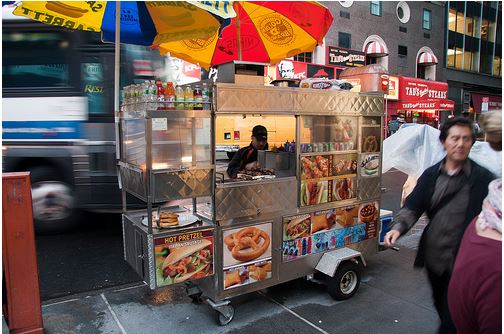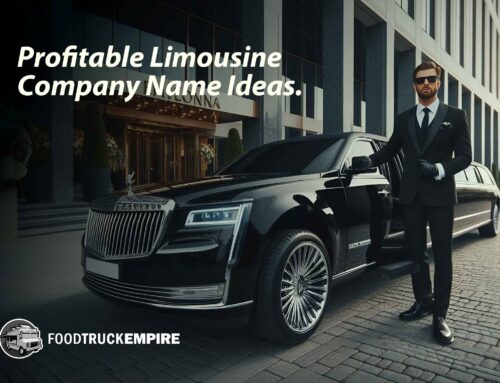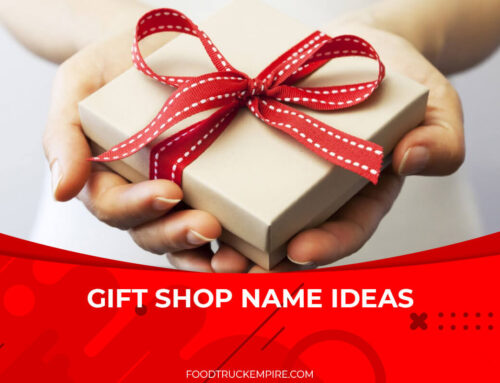Guess what? I’m going be launching my first street food business later this year. I won’t be keeping you in suspense about the concept too long, but I did want to write a post that outlines the ideas that I’ve put the most serious consideration into. These are the ideas that made my short list as the best businesses to start based on all the food business options available and my personal skill set.
The reason I’m publishing this information here is that I want to give you more insight into my decision making processes on what food I will be serving to customers. This is not a decision that I take lightly since I will have to live with this choice for the next few years at least. I want to be as close to 100% confidence levels as possible when moving forward with the idea.
That said there are a few rules I had for any idea that would make this short list:
1.) The food concept must be proven. I don’t want to try to sell any type of food that I worry whether people will like a lot. I want to be selling food items that aren’t fads and will stand the test of time. That means I won’t be starting something like a “Kale Cart” that only serves that single type of leafy green. I will not be starting some innovative food cart that changes their menu daily and pushes the boundaries of what can be executed on a mobile food unit. That’s just not me!
I need something that is simple, proven, and that I know people will desire forever. Think BBQ, tacos, burgers, or other restaurant concepts that have always been around and will continue to stay in business. I want to remove the guess work from whether or not people will want my food. That being said I do need to be able to put my own spin on the menu item. That leads well into my next point…
2.) Must be able to differentiate. This almost flies in the face of my previous bullet point. But I also want to be able to put a unique spin on the food I serve. I want to give people something that they can’t get anywhere. BBQ businesses do this well by specializing in a specific style of cooked meats, like Kansas City versus Memphis. In short, I want to pick a food group that people like, but has the flexibility to put my own spin on.
3.) Good Margin. If you want to operate a healthy business that can provide for your family long-term, the bottom line is that you’ve got to be able to turn a profit. I’ve had the opportunity to get to get a sneak peak inside a lot of food truck and cart business by operating this website and I can tell you first hand that you need to be able to sell a product that doesn’t cut it too close on the margins. There will be spoilage of food, you will have waste, and encounter other emergencies that will attempt to cut into profitability. I need to be selling a product with a thick margin. My personal goal is over 33% of net profit per sale.
4.) Ability to Grow. This website is about building a food empire, not how to start a small food business. Long-term, I want there to be some type of a realistic path for growing a large food brand. If I’m going to be starting a business anyway, why not build one with potential for growth?
My Top Three Street Food Business Ideas
Hot Dog Vendor – I’ve published an entire series on how to start a hot dog business. I think this category is a winner for a lot of reasons. First, the barrier to entry is low. You can get up-and-running with a hot dog cart, permits, and inventory all for under $10,000 total investment in many areas of the United States and Canada. With a price that low, it’s not hard for an operator to quickly recoup his or her entire investment over the course of a summer.
Hot dog vending is also a business model that has stood the test of time. It’s been over century since the first hot dog vendors hit the streets of New York City and while times have changed people are people and they still enjoy a classic hot dog. According to the National Hot Dog & Sausage Council 95% of U.S. households consume hot dogs and eat 20 billion hot dogs each year. That number certainly provides a solid runway for growth!

The hot dog cart is one of the businesses that is on my short list.
The margins are also strong with this group. As a vendor, you can sell a hotdog with all the fixings including ketchup, mustard, pickles for a cost of about $2.00. You can then easily turn around and sell that hotdog for between $4.00 – $8.00 depending on where you live. Wieners are also sold at a consistent price in grocery stores so you won’t need to deal with much fluctuation in the cost of your product.
Finally, there are numerous hot dog restaurants and franchise opportunities that specialize in serving different styles of hot dogs. A couple examples include Hot Dog on a Stick that is frequently found in shopping malls across America to the Dave’s DogHouse Franchise. Overall, I love this category!
Shaved Ice – This is another category that is proven through examples from simple shaved ice carts vending at local fairs, to mobile franchise opportunities like Tikiz and Kona-Ice, to larger investment brick-and-mortar franchises like Bahama Bucks. With all the examples of successful snow cone businesses of varying sizes, it’s clear that it’s more of a question of how well you can execute your shaved ice business versus whether or not there’s demand for the product.
Since there’s a clear demand for shaved ice, the next thing I want to look at is margin. The margins of shaved ice are incredible! Even better than that of the hot dog business model described above. The ingredients needed to make a cup of shaved ice are extremely low cost (ice, syrup, cup, straw). Often a cup of shaved ice that sells for between $2.00 – $3.00 will only cost the operator about $.30. That leaves a lot of money left over to drop into the bottom line.
From a margin standpoint there’s little waste as well that literally eats into the profits of many food business concepts. One big reason is that you don’t really need to worry about the product going bad. Ice has a long shelf life and syrups can be kept for months without any noticeable loss in taste or quality.
Finally, as an entrepreneur you always want to be looking for ways to scale and grow your business. Although, scaling any type of food business has it’s challenges and it isn’t easy… That doesn’t mean it isn’t possible. One entrepreneur we featured below has built a $1-million dollar business from shaved ice by continuing to purchase more shaved ice machines, hiring employees, and being able to generate sales from over 10 events per weekend in their area. They also have diversified and sell their own brand of syrups. This is how you starting making really good money slinging ice!
Audio Lesson: Learn how one entrepreneur started a $1 million dollar shaved ice business.
Audio Lesson #2: How much does it cost to start and operate a shaved ice stand?
Popcorn – Last but not least let’s talk about gourmet popcorn. There a few different permutations that this could look like for mobile food… One common way to sell popcorn while being mobile is to start a kettle corn business.
No doubt you’ve seen a kettle corn vendor or two at a craft fair or farmer’s market near you. The model works for a variety of the same reasons the above business models work. First, people love kettle corn. That’s just fact! No need to reinvent the wheel although anyone entering the space should still be sure to different their branding a bit so they are not just another kettle corn dealer.

A High-Profit Margin Snow Cone. Photo Credit: Pinterest
High profit margins exist here as well. You can sell a bag of kettle corn for $5.00 at most events conservatively across the United States. You could sell each bag for more like $7.00 depending on the event and where you happen to live. But let’s stay conservative on price in this example. The all-in cost to you the food vendor per bag should be around $1.50 – $1.60. That leaves $3.50 in net-profit per bag. That’s a margin over 50%. This is incredibly appealing amount of profit in the food space.
I love the available options to grow the business beyond a tiny little kettle corn business in this category too. The options to branch off and expand are probably the best of the three within this market. You could move into the ready-to-eat (RTE) market and try to get your own brand of popcorn sold in grocery stores, gas stations, and big-box retailers like Wal-Mart.
One super successful case study of a family that took this path is Angie Bastian and her family. Angie started out with a little kettle corn stand selling outside of the Metrodome at Minnesota Vikings games in Minneapolis. Fast forward a few years and a lot of work, Bastian has grown that little kettle corn stand into a $50 million dollar business selling bags of popcorn in places like Target and most grocery stores. Just because Angie’s has had enormous success like this doesn’t mean that getting to this level of scale will be easy. But it is possible and just that knowledge is a great motivator for me.
Now that you know the street food businesses I’m considering, which one do you think I should choose? If there’s any other food business that fits my four-part business criteria above, I’m all ears as to hear your thoughts.




